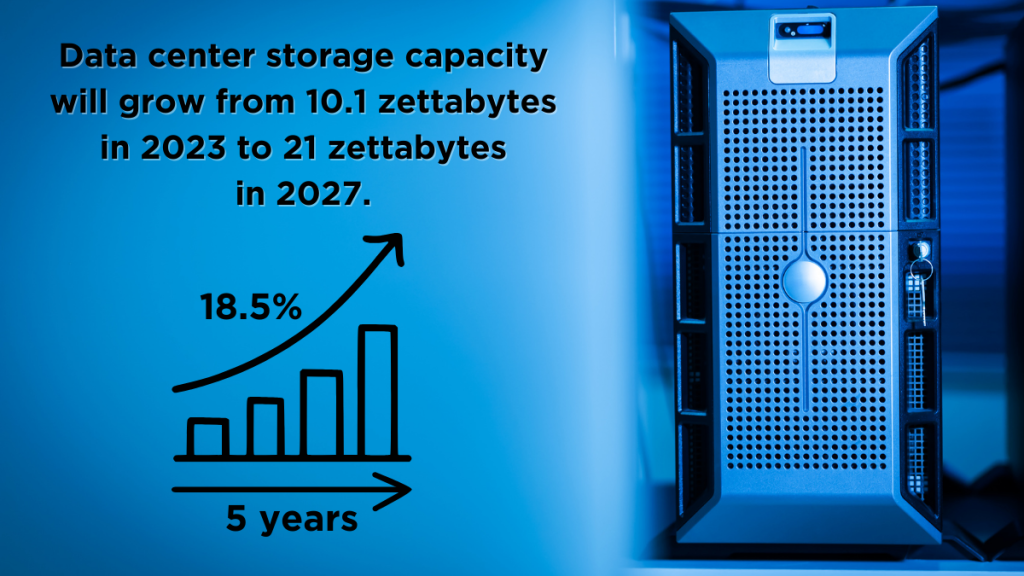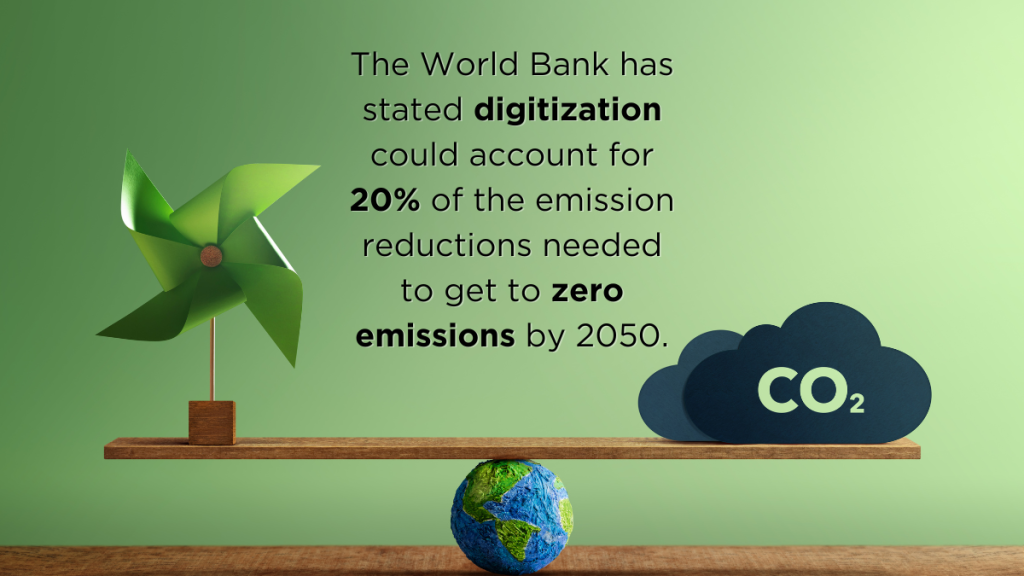We are entering a new era of work—one where AI (artificial intelligence) and the IoT (Internet of Things) will drive innovation at companies in nearly every vertical market around the globe. At the heart of all of this is the data center.
As we enter this new era of work, we must also consider the role of the data center. JLL suggests data center storage capacity will grow from 10.1 zettabytes in 2023 to 21 zettabytes in 2027, which is a five-year compound annual growth rate of 18.5%. As data rises, so too will the need for data centers, and so too will the need for greater sustainability and energy efficient designs.

With this challenge comes an opportunity; an opportunity to tap into more sustainable computing power to spur the next era of innovation in a sustainable way that is beneficial for all.
To begin this journey, we asked the experts what comes next. We inquired what is next for infrastructure and sustainability. We questioned how the data center community can increase resiliency and reliability to contribute to meeting corporate sustainability goals. We asked what types of benefits we will see as we increase energy efficiency and workload. Let’s consider what comes next.
What is next for infrastructure and sustainability?
“One of the next major steps for sustainability will involve more deeply leveraging AI and other cloud technologies to reduce energy, emissions, and resources. Buildings become ‘smart’ by being micromanaged by cloud applications for efficiency. Solar and battery utilization and output can be increased with predictive algorithms. The World Bank has stated digitization could account for 20% of the emission reductions needed to get to zero emissions by 2050.

But can data centers remain efficient? That’s the second big trend. Data centers have a fairly strong track record when it comes to efficiency. Data center workloads grew by 10x in the past decade, but electricity consumption stayed flat.

AI potentially could start raising power consumption: training requires an inordinate amount of data and processing power. We’re seeing data centers go from megawatt scale to gigawatt. It will be incumbent upon the industry to develop more efficient processors, networks, and architectures. Overall, I think we can overcome these challenges, but it will take quite a bit of work and creative thinking.” – Radha Nagarajan, SVP and CTO of connectivity at Marvell and a visiting professor at the National University of Singapore
How can the data center community increase resiliency and reliability to contribute to meeting corporate sustainability goals?
“There are a number of things. First, people have learned to build and operate data centers in a more efficient way. Facilities optimization was one of the big driving forces behind that track record of efficiency in the 2010s. The PUE (power use effectiveness) average went from 2.5, which means that more than half of the power was used for air conditioning, to close to 1.5. In leading data centers it’s close to 1.0.
Going to the cloud also helped because it increased equipment utilization. The cloud can also help with resiliency. The Uptime Institute noted in its 2023 survey that outages that cost $100,000 or more are down to 10% of the total, less than half their historical average.
So, what’s next? Cloud operators, telecommunications providers and companies that make semiconductors and other equipment that go into data centers are going to have to rethink their core components. We will see a shift from putting workloads on standard processors to processors optimized for particular workloads or a particular network. In other words, every cloud will have its own silicon. As customized chips get more cost-effective to produce, you’ll see more customers adopt them.
Optical technology, which is already used to connect data centers or racks within data centers, will be used to connect servers within a rack. Ultimately, we will see optical replace copper inside of systems and even inside of chips. Why? Optical is far faster and can send more bits with fewer electrons.
Here’s an example. Right now, the chips inside an optical module—which is a device that plugs into a switch for making a fiber optic connection—sit on a board side-by-side and are connected by copper wires. My team is working on whether the chips can be stacked to reduce the length of the connections. That shift, along with a few other tweaks, could reduce the power consumption of modules from 14 picojoules per bit to 10 and even maybe get it close to 5. A single picojoule isn’t much power, but modules can send 800 billion bits a second and there are millions of modules operating nearly 24 hours a day. Potentially, it adds up to megawatts.
Software will also improve. People often think hardware is the only way to save power, but software can be written in a way that reduces computing cycles.” – Radha Nagarajan, SVP and CTO of connectivity at Marvell and a visiting professor at the National University of Singapore
What types of financial benefits will we see as we increase energy efficiency and workload?
“Power costs. Power can represent up to 70% of the operational costs of a data center in some situations: anything you can do to reduce them or keep them flat helps. But there are other costs. Residents of London, Dublin, Phoenix, and other cities are objecting to the development of large data centers because of the power they consume, thereby delaying construction projects. But what if you built smaller ones connected by fiber that can effectively replicate the capacity of the larger ones? You can reduce grid stress and get online quicker, which means revenue starts to generate earlier. Switching to satellite data centers potentially can also cut permitting, planning and construction costs. Companies have begun to experiment with this.” – Michael Kanellos, director of influencer relations at Marvell

What other benefits will we see?
“If people can see the benefit of data centers, and see how you’re trying to be more efficient, you can eliminate unnecessary conflict and move forward on projects that can be mutually beneficial. People understand the need for data in their everyday lives. The challenge is how to build and sustainably scale the data warehouses so that they are good neighbors.

Digitization of industries will also have an enormous impact on emerging economies. The grid and digital infrastructure in many countries is still fairly unstable. But it’s not because the residents of those countries don’t see the benefits. It’s because they can’t afford to build or maintain resilient enough infrastructure. If we can develop a roadmap for sustainable data centers, we can then use those data centers as part of a foundation for more sustainable grids; we’re going to see the benefits of these technologies reach more people”. – Michael Kanellos, director of influencer relations at Marvell
What challenges will we face as we continue to make this transition?
“Technology takes time and experimentation. Remember a few years ago when people thought hydrogen or fuel cells would be major industries? Instead, solar, wind, and efficiency became the core of the new energy economy. They scaled far better.
With AI, we don’t have the magic formula for data center architectures yet. We’ll get there but it will take trial and error. Or perhaps in the longer run, an AI designed/optimized AI data center may be the answer!” – Radha Nagarajan, SVP and CTO of connectivity at Marvell and a visiting professor at the National University of Singapore
Want to tweet about this article? Use hashtags #IoT #sustainability #AI #5G #cloud #edge #futureofwork #digitaltransformation #datacenter


